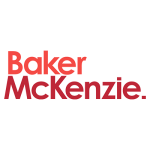Much has been made of the rise of the special purpose acquisition company (SPAC) market in the US this year – the records keep falling. Gross proceeds raised by these blank-cheque companies this year alone now amount to well over $50 billion (compared with a seemingly paltry $13.5 billion in 2019 – at the time, a bumper year). We have seen the largest ever SPAC IPO, with Bill Ackman's Pershing Square vehicle raising $4 billion in May.
SPACs in the US have only tended to search for national targets – until, that is, the announcement that UK electric vehicle maker Arrival Group is to merge with Nasdaq-listed CIIG – heralding a new wave of SPACs looking at European acquisition targets in the coming years.
A wide variety of sponsors are raising funds through SPACs in 2020, from large private equity houses to tech entrepreneurs and even ex-NBA stars – with Shaquille O'Neal teaming up with Walt Disney executives and one of Martin Luther King Jr's sons to raise funds to make media and technology acquisitions. It has also recently been reported that Softbank is considering raising a SPAC vehicle.
However, despite the wide variety of SPAC sponsors, one key theme that has emerged in 2020 is that sophisticated players such as large private equity houses and hedge funds have been attracted to the market, including Centerview Capital, TPG and The Gores Group. In addition, mainstream institutional investors are also participating as shareholders – the CIIG Arrival Group deal was backed by blue chip investors including Blackrock, Wellington Management and a BNP Paribas fund.
Therefore – in contrast to previous SPAC booms – there is now a maturity about these vehicles, in terms of the sponsors backing them, the amount money that they are raising and the quality and value of the assets they are looking to acquire. Inevitably, market participants are innovating constantly, devising new structures, honing existing structures or introducing new features – all with a view to making SPACs more attractive to investors and potential acquisition targets. This means they are now serious players with a large amount of capital to make acquisitions – and money, it seems, will be no object. In September, for example, we saw the largest ever SPAC acquisition, which valued United Wholesale Mortgage at $16.1 billion.
Key US SPAC statistics since 2009 |
Source: SPAC Insider; 17 September 2020 |
Why are SPACs looking to Europe?
To date, many SPAC acquisitions have been focused on US targets. However, it is unlikely that this will remain solely the case for long and SPACs, with their significant war chests, are likely to become a part of the European M&A landscape as we head into 2021. There are a number of reasons for this:
Large and attractive privately held businesses Over the last 10 years or so, a number of start-up and growth-stage businesses have reached maturity, but are still privately held. Some of these companies now have very high valuations. This new dynamic means that there is an opportunity for SPACs that raise significant funds to acquire businesses at high valuations. In addition, with the perceived execution risk that arises from the traditional IPO structure, SPAC sponsors believe they will now offer an attractive exit route for these businesses. European companies that would otherwise wish to seek a listing on a US exchange (the Nasdaq in particular) may prefer to achieve this outcome through a sale to a SPAC.
Competition for assets With the large number of SPACs that have raised capital in the US this year, competition for quality US targets is likely to heat up. SPAC sponsors may therefore begin to look beyond the US for targets. In addition, a number of European sponsors are considering listing SPACs in the US, where there is an abundance of capital, specifically with a view to acquiring European targets. Therefore, businesses in Europe are likely to become increasingly attractive as US SPACs look to deploy their capital in 2021.
Lack of a European SPAC market Although there have been rumours of a London-based SPAC sponsored by Mariposa Capital founder Martin Franklin and Viking Global Investors executive Brian Kaufmann to make acquisitions in the consumer space, so far in Europe the SPAC market is yet to take off.
|
|
SPACs, with their significant war chests, are likely to become a part of the European M&A landscape as we head into 2021 |
|
|
The principal reason for this lack of appetite has been that investors are not afforded the same flexibility as in the US. A SPAC with a standard London listing is not required to obtain shareholder approval ahead of any acquisition (although shareholder approval is required for an AIM listed SPAC). Also, in the UK, acquisitions by SPACs are usually classed as reverse takeovers, which give rise to the suspension of the SPAC's shares from trading until the SPAC is able to issue a prospectus (or other relevant offering document) or make available sufficient information (including financial information) about the target to meet what is quite a high regulatory hurdle. There is talk of possible rule changes from regulators in European markets, but there is no immediate prospect of a dramatic increase in SPACs coming to the market in major markets like London any time soon.
Covid-19 pandemic The Covid-19 pandemic has hit some sectors hard while others have flourished. This has led sponsors to seek opportunities either to acquire fundamentally sound businesses at a discounted price, or to invest now in those sectors where they perceive there to be the most exciting growth opportunities. Accordingly, industries going through significant and fast-paced change such as emerging technologies, media and healthcare, have been the focus of many SPAC acquisitions.
For these reasons, the SPAC sale is now a viable exit option for a number of European companies and their shareholders, and one that was not really considered viable a year ago. It now sits alongside the traditional IPO, trade sale and PE buy-out as a fourth exit option. An understanding of this fast-moving and highly innovative market will therefore be important as we move into 2021.
The SPAC as an exit option
The sale to a SPAC is often seen as a way for a company to get to an IPO faster and more efficiently than through the traditional route. The timetable for a SPAC acquisition is typically three to six months as opposed to the 12 to 18 months to prepare for and execute an IPO. A SPAC will negotiate the purchase price directly with the target and its shareholders and, since the SPAC is already listed and has already raised much of the cash to fund the acquisition, market volatility and investor sentiment are largely taken out of the equation. These are the key attractions of a SPAC exit, providing more certainty around valuation and deal execution.
However, for all of the positive news-flow and commentary on the virtues of SPACs, it is important to remember that a number of these vehicles have achieved notoriety for the wrong reasons and returns have not always been strong. Furthermore, certain features of a SPAC can present significant execution risk for companies looking to achieve an exit through a sale to a SPAC. When planning an exit strategy, companies will need to understand these features and look for ways to mitigate the risks.
Shareholder optionality
One of the largest risks associated with the de-SPAC transaction centres around the optionality that a SPAC provides to its shareholders in relation to any proposed acquisition. US SPACs will obtain prior shareholder approval for any acquisition and the shareholders will have the right to redeem their shares if they do not wish to participate in the proposed acquisition. Alternatively, a SPAC may offer shareholders the right to tender shares to the SPAC at the IPO price, in which case, shareholder approval for the acquisition is not required. The ability for shareholders either to tender their shares to the SPAC or redeem them means that the SPAC may have difficulty predicting the aggregate amount of cash outflow associated with redemptions.
|
|
In the UK, acquisitions by SPACs are usually classed as reverse takeovers, which give rise to the suspension of the SPAC's shares from trading until the SPAC is able to issue a prospectus |
|
|
Potential SPAC targets should therefore look carefully at the ways in which both they and the SPAC sponsors can mitigate these risks:
Shareholder approval The SPAC sponsors will typically undertake to vote their shares (usually totalling around 20%) in favour of the acquisition, thus reducing the number of votes required. Sponsors may also purchase shares in the market and vote those shares in favour of the deal. In addition, other stakeholders in the SPAC, such as directors or major shareholders, may provide support agreements under which they commit to vote in favour of the de-SPAC transaction. Potential SPAC targets should look to ensure that some or all of these actions are taken.
Right of redemption/right to tender shares SPAC sponsors are aware that this represents a risk to the de-SPACing process. To mitigate this risk, SPACs sometimes raise further funds at the time of the acquisition through a PIPE (private investment in public equity), whereby existing or new investors subscribe for further shares to replace the funds anticipated to be dissipated through redemptions. A SPAC may also enter into forward purchase agreements at the time of listing, whereby investors agree to purchase shares (usually at a discounted price) at the time of the closing of the acquisition. These forward purchase agreements represent a firm commitment to fund, and these shares purchased are not redeemable.
There has also been a recent tendency for SPACs to utilise structures that provide economic incentives to those shareholders who do not redeem their shares or even dis-incentives to those who do. For example, Bill Ackman's Pershing Square vehicle issued warrants to investors that had certain rights and obligations enshrined in them so that they were forfeited by investors that chose to redeem and were re-distributed to those that did not (and thereby inviting the name "tontine warrants" – a nod to the 17th century investment plans whereby investors paid into a common pool and the returns were shared with the surviving investor(s) at the end of the investment period).
Targets that are planning a SPAC exit should look carefully at the certainty of funding of the SPAC and fully understand any forward purchase agreements, associated PIPE transactions and other structures that have been put in place to mitigate the risk of redemptions.
Alignment of strategic interests It will be important to ensure that the interests and goals of the SPAC are aligned with the interests and goals of the target and its shareholders. The acquisition should tie in closely with the stated investment strategy of the SPAC and its sponsors. The target board will want to quiz the SPAC sponsors carefully on their long-term goals for the target and their understanding of the investment case. The closer the alignment, the more likely it is that the acquisition will make sense to the SPAC shareholders – thereby increasing the likelihood of obtaining shareholder approval and reducing the risk of redemptions.
Understand the sponsors' remuneration structure Traditionally, sponsors will be remunerated though the ability to acquire shares in the SPAC at nominal value or close to nominal value. This can result in the sponsors obtaining a return in circumstances where the other shareholders will not. However, some SPAC sponsors (for example Bill Ackman's Pershing Square vehicle) have developed remuneration structures which mean that SPAC sponsors will only make a return where the SPAC's share price has exceeded a certain level. This incentivises sponsors to seek targets that are likely to be successful and, accordingly, acquisitions proposed to shareholders are more likely to obtain approval.
How close is the SPAC to its outside date? A SPAC will have an outside date; a deadline by which it must make an acquisition or return funds to investors. Typically, this is 18-24 months following the SPAC's listing. As the outside date approaches, SPAC sponsors may become increasingly keen to do a deal, creating tensions between the competing interests of the sponsors and their investors. The closer to the deadline the SPAC comes before agreeing the terms of a deal, the more a target should question the sponsors on the valuation of the target and its long-term prospects. Conversely, the closer the outside date, the greater the risk that shareholders will decide that they would rather have their money back than vote through the deal.
Finally, deals done in a rush close to the SPAC's deadline can be more open to post-acquisition litigation from shareholders.
IPO readiness
While the timeline to an IPO through a SPAC is typically quicker than a traditional IPO, companies should not underestimate the size of the task in becoming IPO ready. It is a common misconception that a backdoor listing through a SPAC is easier than a traditional IPO. The shortened timetable for a SPAC deal versus an IPO is an advantage, but it does not reduce the amount of work that will need to be done to become IPO ready. Historical financial information, audited to Public Company Accounting Oversight Board (PCAOB) standards, will need to be included in the Form S-4 or proxy statement shortly after entering into the acquisition, and many targets will need to commence preparing that information well in advance of any business combination with the SPAC. This challenge will be greater still for non-US targets and so European targets may need to begin preparing earlier. Furthermore, due diligence done to a standard necessary for adequate public disclosure in the Form S-4/proxy will also be required.
In addition, all of the other IPO-ready tasks will need to be performed, including determining the post-IPO board composition. This includes taking into account the imperative for boards to be diverse and, among other things, conducting reviews of internal controls and financial reporting procedures appropriate for a public company, as well as putting in place the right governance and other legal and regulatory policies – such as those relating to the disclosure and control of non-public information. The size of this task should not be underestimated.
What does this mean for European boards and investors?
With the vast amounts of capital raised by SPACs in the US this year, it seems inevitable that more of it will wash onto European shores. The underlying fundamentals that make US targets in certain sectors attractive to SPACs apply equally to potential European targets.
Therefore, boards and investors of European targets will need to understand the risks and rewards of a SPAC transaction when set against other possible exit routes. They will need to factor a possible SPAC transaction into their planning and ensure that they are well prepared in order to mitigate some of the risks associated with the de-SPACing process. They will also need to consider carefully the track record and strategic plans of the SPAC sponsors to ensure the right strategic fit. Taking these steps will help to ensure that the transaction will be one of the SPAC success stories.

|
Nick Bryans Partner Baker McKenzie, London |
|

|
Adam Eastell Partner Baker McKenzie, London |
|

|
Steven Canner Partner Baker McKenzie, New York |

